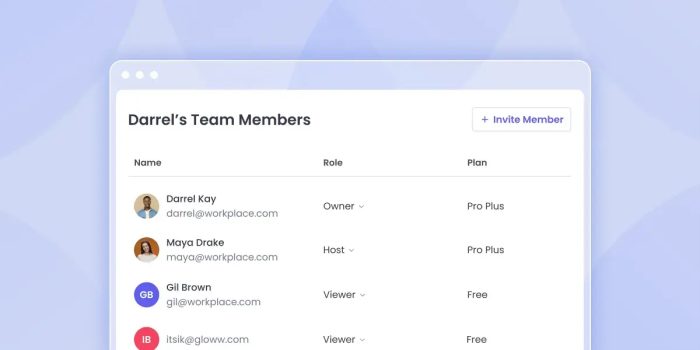If you’re not making use of video conferencing, now’s the time to do so. More businesses than ever before are working with remote teams, while a significant number of organizations have embraced a hybrid workforce. For most organizations, video conferencing is essential, not a luxury.
While video conferencing has been around in some form for many years, it’s only recently that technology has become readily available and accessible to everyone. If you’re keen to connect remote teams, streamline collaboration, and enjoy efficiency and productivity gains, adopting video conferencing should be a priority.

What Exactly is Video Conferencing?
Video conferencing is a practical alternative to face-to-face meetings. It used to be the only way to communicate with remote teams or clients based in other countries. Today, it’s the standard for many organizations with employees and customers based across the world.
In an era of high-speed internet connections, HD video conferencing platforms are the standard, with participants only needing a reliable broadband connection and some basic hardware. However, video conferencing is a fairly broad term. There are many different types of video conferencing systems out there. Some solutions depend on a conferencing bridge, while others rely on specific conferencing technology and equipment. In every case, video conferencing makes staying connected easier than ever.
How Does Video Conferencing Work?
While video conferencing seems fairly simple, a significant amount of technology is involved to facilitate those video meetings in real-time. First, you need to consider compression. While sound and video are input in analog form at one end, video conference software converts these analog signals into digital ones.
Once this conversion has taken place, this data is then packetized, before being compressed so it can travel over the internet more quickly. This compressed input is then transferred over the internet. Once the data transfer is complete, information is decompressed, allowing recipients to see and hear it via their screen.
Main Types of Video Conferencing
Multipoint Conferencing
Otherwise known as group video conferencing, multipoint video conferencing involves three or more parties. For many business users, this video conferencing solution is the standard. However, the technology behind multipoint video conferences is complex. It involves syncing signals from multiple locations, which means something called a multipoint control unit (MCU) is needed to serve as a bridge. LAN networks also need to be configured. When you add in the cost of additional conferencing equipment, multipoint conferencing can be an expensive option.
Integrated Solutions
Integrated video conferencing systems tend to be used for group video calls. In this case, hardware is usually stored in a centralized location. While integrated video conferencing platforms do offer things like 4K Ultra HD resolutions and advanced levels of encryption, the outlying cost can be considerable. This makes it an unrealistic prospect for a small business looking to host video meetings and monthly get-togethers.
External Video Meetings
If you need to host a meeting with an external client or vendor but can’t meet them in person, external video meetings are a good option. They don’t require any significant investment and are generally fairly reliable. Free or inexpensive video conferencing tools usually provide all the functionality you’ll need here. What’s more, they can help foster strong relationships between companies and important clients.
Point-To-Point
A far more affordable type of video conferencing is point-to-point video calling. As this approach only involves two locations, there’s no need for a bridge. All that’s required here is a stable internet connection and both parties having access to sufficient equipment.
Video Conferencing as a Service (VaaS)
If you don’t want to invest a fortune in video conferencing solutions, using a service provider makes sense. While some services offer free video conferencing, others operate a tier-based subscription model. The good thing here is that you don’t need to have an in-depth understanding of how video conferencing works, with all the technical side taken care of.
Key Features to Look Out For
Along with video chat functionality, most video conferencing solutions offer the same basic features. However, some of these are more valuable than others. At a minimum, you’ll want to choose a service that provides the following:
Screen Sharing
If you’re hosting internal team meetings or presenting to clients, you might need to share important documents or videos with other parties. Screen sharing makes this possible.
Call Recording
If you’re using video conferencing solutions for monthly or quarterly reviews, you’ll want to capture those insights and keep a record of discussions. Video call recording makes this possible, turning previous online conferences into a valuable resource.
Flexible Audience Sizes
If you’re looking for video conferencing solutions for things like all-hands meetings, flexible audience sizes are a must. The best providers allow you to host events with hundreds of participants.
Device Switching
In an age when most of us use multiple devices at any one time, this feature is incredibly useful. With it, you can switch from a desktop to smartphone instantaneously, without having to abandon and rejoin the session.
Live Chat
Good video conferencing platforms should allow you to engage with the conversation, without having to interrupt the main speaker. Live chat functionally lets users do just this. Along with group chat windows, participants should also be able to send private messages and share files with individual users.
Event-Ready Templates
Do you need to use video conferencing solutions for a variety of meetings and online events? You’ll want a provider that offers a range of event-ready templates you can tailor to your needs.
Looking for a video conferencing provider that delivers all the features above and more? With Gloww, you’ll enjoy access to ready-made, interactive presentation templates for every online event, collaboration tools, engaging interactive elements, and more.

Top Uses for Video Conferencing Technology
All-Hands Meetings
Virtual all-hands meetings are an important event in any corporate calendar. A reliable video conferencing provider makes it possible to bring together hundreds of participants at once. What’s more, screen recording and collaboration tools ensure you get the most out of those monthly sessions.
Webinars
You can use video conferencing to turn virtual get-togethers into online learning environments. Perfect for introducing valuable skills to your workforce or establishing yourself as an industry authority. Unlike podcasts, an interactive webinar allows you to leverage the full potential of an AV experience.
Product Training
If your business sells products or software, video conferencing can be used for product demos and online company training. With high-quality video introductions of your products and their features, you can ensure your customers are getting full use out of them. What’s more, it negates the need for expensive onsite visits.
Employee Onboarding
Virtual onboarding is particularly important as more businesses adopt remote working or the hybrid workplace model. They can be used for everything from job interviews to employee training. Even if you’ve only recently made the move to remote or hybrid working, video conferencing can facilitate employee development virtually.
Team Building Activities
Remote teams often need a little push to work collaboratively. With video conferencing, you can host regular team-building sessions, a virtual work happy hour, or a virtual team trivia, to encourage a culture of communication and togetherness.

Frequently Asked Questions
People respond better to visual information. If your business works with remote employees, you can’t depend solely on written exchanges and text-based assets. Video conferencing can enrich internal communications and aid employee development. What’s more, it broadens horizons. Even small to medium-sized businesses can start thinking internationally once they’re leveraging the potential of video conferencing and all its applications.
As well as being more engaging than audio conferences, video conferencing can help remote teams feel more connected. With the right service provider, you can turn video meetings into virtual team-building sessions and employee development environments. What’s more, it takes the effort out of having to schedule in-person meetings. As attendees can join in from pretty much anywhere, those all-important monthly review sessions can be locked down relatively easily.
Along with staples like Microsoft Teams and Google Meet, there are hundreds of video conference software solutions out there. Some are free to use, while others offer advanced features for paying customers. With Gloww, you have a flexible solution that can be easily tailored to your requirements.
Looking for a Reliable Video Conferencing Provider?
Are you looking for a video conferencing solution to facilitate all-hands meetings or streamline the onboarding process? Perhaps you’re eager to encourage better communication with online team-building sessions. Maybe you’re looking to unlock the potential of webinars or live product demos to engage with your customer base. Whatever you’re hoping to get out of video conferencing, Gloww can help.
With Gloww, you have access to event-ready templates that can be tailored to any online event. Need to put the personal touch to your sessions? You can incorporate all manner of Gloww interactive features and interactive elements. What’s more, with the option to add up to 1,000 participants, you’re hardly limited when it comes to audience size. Device switching, live chat functionality, screen sharing, and session recording are all supported.
You can start using Gloww today. If you’d like to learn more about our advanced features, why not take a look at our premium pricing plans? Eager to get started, but still have questions? Get in touch with the team via the online contact form.

























